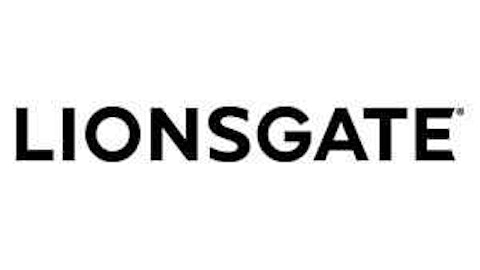I’ve been a big fan of The Walt Disney Company (NYSE:DIS) in the past year or so, suggesting several times that the stock might be undervalued. The combination of an improving economy and a strong slate of movie releases looks to have the “Mouse House” positioned for positive results. While I’m happy to see that investors have agreed with me, I think investors need to allow The Walt Disney Company (NYSE:DIS)’s stock to take a rest while its results catch up to the stock price.

Superhero Performance
One of my core arguments for Disney doing well this year was the upcoming and current releases of movies like Iron Man 3, Thor: The Dark World, Monsters University, The Lone Ranger, and more. While nothing has changed about my thesis that these movies will propel The Walt Disney Company (NYSE:DIS)’s earnings, investors need to realize that the company’s Studio Entertainment division represents about 13% of total revenue. The two much larger divisions are Disney’s Media Networks and Parks and Resorts businesses.
The company’s results weren’t bad in any of their divisions, but I’m afraid investors are expecting too much from the rest of the year. Media Networks reported overall revenue growth of 6%, led by ESPN. With 74.21% of The Walt Disney Company (NYSE:DIS)’s operating income generated by this division, it’s critical that ESPN and ABC hold their own. I’m a little worried about ABC.
ABC saw revenue down 2% in the current quarter, while competitor CBS Corporation (NYSE:CBS) reported a 8% increase, and Time Warner Inc (NYSE:TWX)‘s TBS and TNT properties reported a low single-digit increase. The only major network to do worse than ABC, was NBC, which is owned by Comcast Corporation (NASDAQ:CMCSA). However, the comparison is a bit unfair, because Comcast had the benefit of the Super Bowl last year, whereas this year CBS benefitted from this event. Without the Super Bowl issue, NBC’s revenue would have been relatively flat versus last year.
Disney’s Parks and Resorts and Studio Entertainment followed my basic premise that increased attendance would drive the Parks’ results, and that strong movies would drive the Studio’s results. With revenue up 14% at the Parks and Resorts division, and a 13% increase at Studio Entertainment, there is certainly nothing wrong with these results.
Those 4 Problems
Looking at the above numbers, investors would be right to be proud of The Walt Disney Company (NYSE:DIS)’s performance. However, there are a few problems.
First, Disney is the only one of its peers to show an increase in diluted shares over the last year. While CBS retired 4.35% of their diluted shares, Time Warner retired 3.4%, and Comcast retired 2.51%, Disney’s share count increased by 0.61%. This isn’t a massive increase, but it will make future earnings comparisons more difficult.
The second issue: The Walt Disney Company (NYSE:DIS)’s revenue growth isn’t translating into superior operating cash flow growth. I use “core operating cash flow,” which is net income plus depreciation when comparing companies. This measure strips away items like tax benefits, adjustments to assets and liabilities, and other non-cash items.
When it comes to core operating cash flow growth, the only company to perform worse was Comcast Corporation (NASDAQ:CMCSA), which reported growth of 6.96%. Disney reported cash flow growth of 10.86%, whereas CBS’ cash flow was up 12.87%, and Time Warner’s was up 17.71%. Since Disney reported better overall revenue growth, you would expect their cash flow to increase the most, but it did not.
The third problem: The company has the highest core free cash flow payout ratio of their peers. Core free cash flow is simply net income, plus depreciation, minus capital expenditures. Using this measure, Disney paid 44.06% of their free cash flow in dividends.
By comparison, Time Warner Inc (NYSE:TWX) paid 32.04%, Comcast paid 19.06%, and CBS Corporation (NYSE:CBS) paid just 14.86%. While Disney’s payout ratio isn’t troublesome, Disney is starting from a higher number, so without superior cash flow growth, future dividend increases may be lower than investors expect.
Lastly, Disney’s stock isn’t the relative bargain that it used to be. In prior quarters, I would compute a PEG+Y ratio for Disney and their peers, and Disney was in the middle of the pack. The PEG+Y is the company’s yield, plus its earnings growth, divided by its expected P/E ratio. The higher the number, the better, since this means the company has a higher expected total return, and a lower relative P/E ratio.
Using this measure, Disney comes in dead last, with a PEG+Y of 0.72. This isn’t a surprise, because at 19 times forward earnings, Disney is relatively more expensive, and their 12.5% earnings growth rate, ranks second lowest. By comparison, Comcast Corporation (NASDAQ:CMCSA) scores the best, with a PEG+Y of 1.14, while Time Warner Inc (NYSE:TWX) and CBS Corporation (NYSE:CBS) essentially tie for second at 0.89 and 0.87 respectively.
Stay tuned, Mouseketeers
Don’t get me wrong — I like The Walt Disney Company (NYSE:DIS)’s chances over the long-run. However, I think the stock has gotten a little ahead of its fundamentals. The company’s payout ratio is higher than its peers. It has the second slowest expected growth rate, the second lowest yield, and the highest P/E ratio. When you combine these factors with subpar cash flow growth, you get rain clouds on the horizon. Existing investors should hold tight, but I wouldn’t buy in at these prices.
The article 4 Reasons This Stock Looks Overvalued originally appeared on Fool.com and is written by Chad Henage.
Chad Henage has no position in any stocks mentioned. The Motley Fool recommends Walt Disney. The Motley Fool owns shares of Walt Disney. Chad is a member of The Motley Fool Blog Network — entries represent the personal opinion of the blogger and are not formally edited.
Copyright © 1995 – 2013 The Motley Fool, LLC. All rights reserved. The Motley Fool has a disclosure policy.


